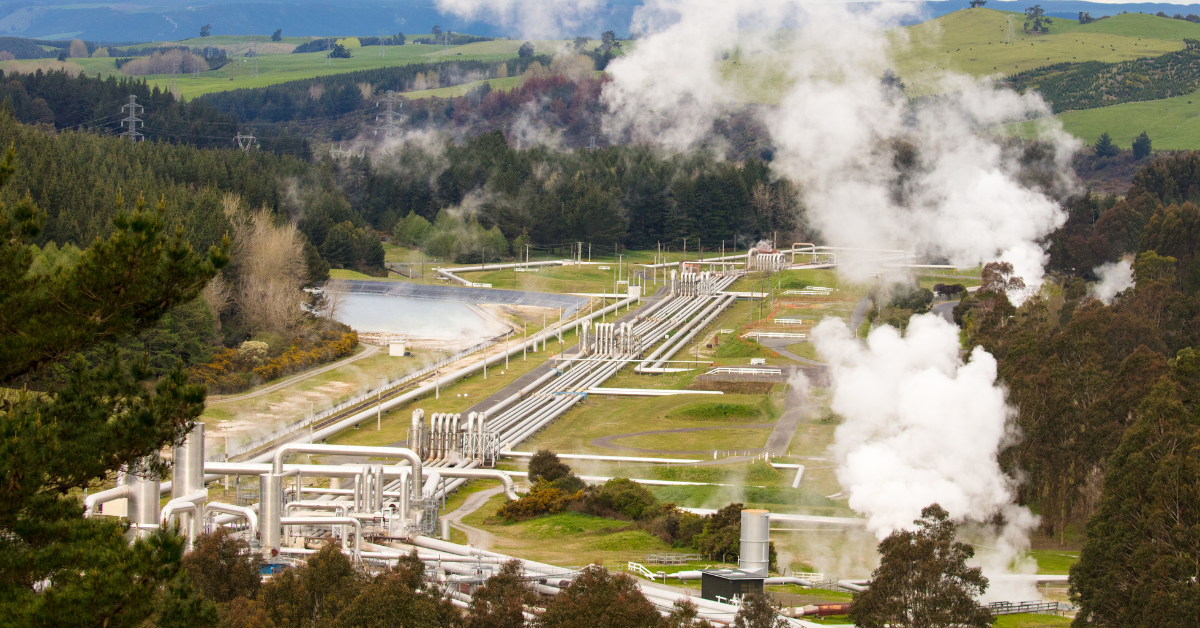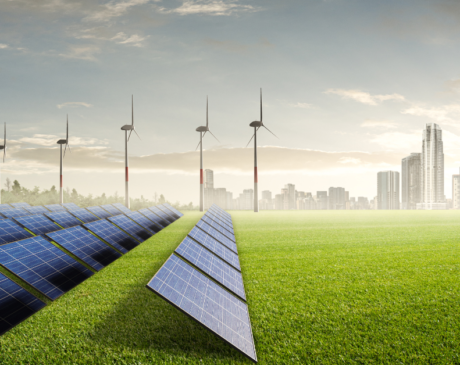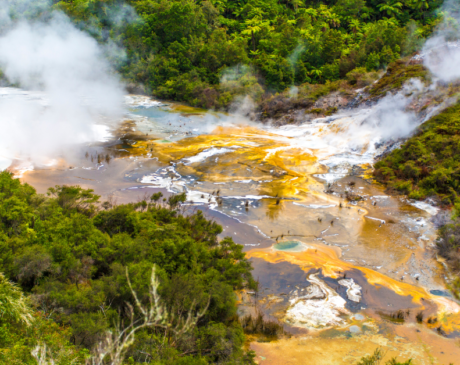Geothermal Energy for Greenhouse Heating

Greenhouses play a vital role in modern agriculture, providing a controlled environment for the cultivation of plants and vegetables year-round; let’s discover the use of geothermal energy for greenhouse heating, a sustainable solution.
Traditional heating methods, such as fossil fuels, can be both environmentally damaging and economically burdensome.
Geothermal energy offers a more sustainable and cost-effective alternative for greenhouse heating, addressing these challenges while also contributing to a greener future.
Harnessing Earth’s Heat
The Earth is composed of concentric layers, with the outermost layer being the Earth’s crust, which can vary in depth from 35 to 90 kilometers.
Erupting volcanoes, thermal springs, as well as the warmth felt in mines and deeper wells, bear witness to the mild temperatures within this zone.
The deeper you go, the more heat increases, roughly by 1°C for every 33 meters. Convective currents and solar radiation also influence the thermal conditions of the subsurface.
The depths of the Earth releases this heat is naturally, towards the surface and is a clean, inexhaustible source of energy known as “geothermal.”
This valuable source adds to renewables such as solar and wind energy.
Geothermal energy utilizes the Earth’s natural heat to warm greenhouses during the colder months.
The Earth’s interior maintains a consistent temperature, typically between 50°F and 60°F (10°C and 15°C) at depths ranging from a few feet to several miles.
By tapping into this stable heat source, greenhouse operators can maintain optimal temperatures for plant growth without relying on external, finite energy resources.

Unlocking the Potential of Geothermal Energy for Greenhouse Heating
You can consider Geothermal energy, therefore, as a valid alternative for those seeking an eco-friendly and cost-effective method to heat/cool their homes and provide hot water for domestic use.
When properly designed and sized, this system is even capable of meeting 100% of a building’s energy needs.
The true advantage of this technology is its ability to combine the functions of a boiler and an air conditioner into a single system.
In Northern Europe and the United States, people have been appreciating and harnessing the potential of this green energy source for residential purposes for some time now.
In Italy, it is still a relatively lesser-known and less widespread method, but thanks to government incentives, it is beginning to gain traction in our country as well.
Anyone looking for a comfortable, environmentally-responsible home environment will find in this energy source an effective, economical, and long-lasting solution.
Geothermal Energy and Geothermal Heating: What’s the difference?
The term “geothermal energy” originates from “geothermia,” a word with Greek origins that means “heat from the Earth.”
The natural heat stored beneath the Earth’s surface is harnessed to generate energy through geothermal heating.
This technology utilizes the temperature in the Earth’s crust to increase the heat of a fluid that circulates through a system of pipes from underground to the interior of a building.
This circular heat transport system operates because the temperature beneath the surface is higher than the surrounding environment during the winter, whereas during the summer, it is lower than the temperature perceived outside.
Depending on the degrees Celsius of this system, you can categorize geothermal energy into high, medium, and low enthalpy:
- High enthalpy: when the temperature exceeds 150°C. Invented in the 20th century in Larderello, Italy, it is ideal for producing geothermal electric power.
- Medium enthalpy: when the temperature ranges between 80°C and 150°C. Perfect for electricity production and district heating.
- Low enthalpy: when the temperature falls between 20°C and 80°C. Most commonly used for domestic purposes.
How Does a Geothermal Heating System Work?
A geothermal heating system, especially one of low enthalpy, extracts thermal energy from the subsurface to transport it inside a building through a borehole in the ground.
Here there is a pipe (or probe), reaching a depth of approximately 100-150 meters. Once the heat is collected, it is transferred to the connected heat pump, which then distributes it throughout the residential structure using radiant panels in the floor or on the walls.
To access the warmer subsurface layers, the system is composed of a network of polyethylene pipes installed either vertically or horizontally underground.
Within these probes, a heat transfer fluid (typically glycol water) descends into the depths and ascends along the entire system to transport the thermal energy from the ground to the dwelling in a closed U-shaped circuit.
Geothermal systems come in two primary types: monovalent and bivalent.
- Monovalent: capable of meeting the entire energy requirements of a residential unit.
- Bivalent: designed for integration with other high-efficiency heat sources, such as solar thermal panels and condensing boilers.

Geothermal Energy for Greenhouse Heating: How Much Does It Cost?
The cost of a geothermal heating system can vary.
The quality of the components, the type of soil, the size of the building and its degree of thermal insulation all influence the estimate.
The probes cost approximately 40 euros per meter, while the total cost for a single 150-square-meter villa can range from 15,000 to 20,000 euros.
The cost may appear high for an individual or family, but the long-term savings change the perspective entirely.
It’s important to consider that heating and cooling expenses are cut in half, if not nearly eliminated, compared to those with traditional systems such as boilers and air conditioners.
Challenges and Considerations
We’ve seen how geothermal energy for greenhouse heating can be a sustainable solution; but, while geothermal heating for greenhouses offers numerous advantages, it’s essential to consider potential challenges.
The suitability of geothermal systems depends on the specific location and geological conditions of the greenhouse.
In some regions, the upfront drilling costs and feasibility of implementing geothermal heating may be prohibitive.
Greenhouse operators must also invest in the necessary equipment and infrastructure, including heat pumps and distribution systems, to make the most of geothermal energy.
Proper system design and professional installation are essential to ensure efficient and effective heating.



